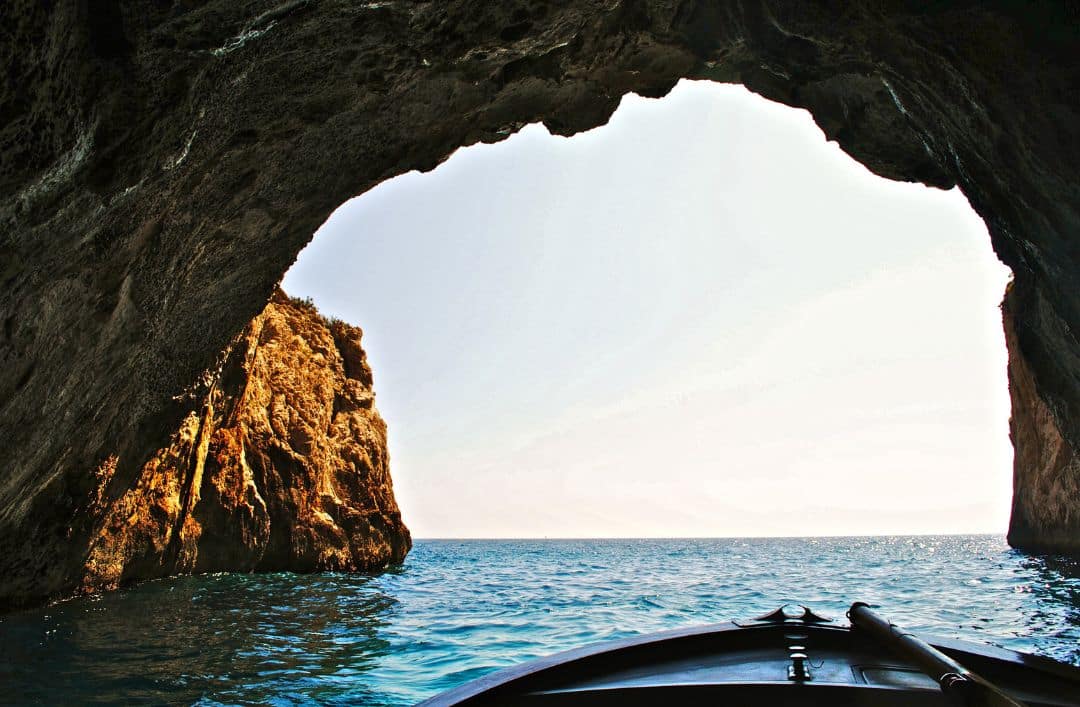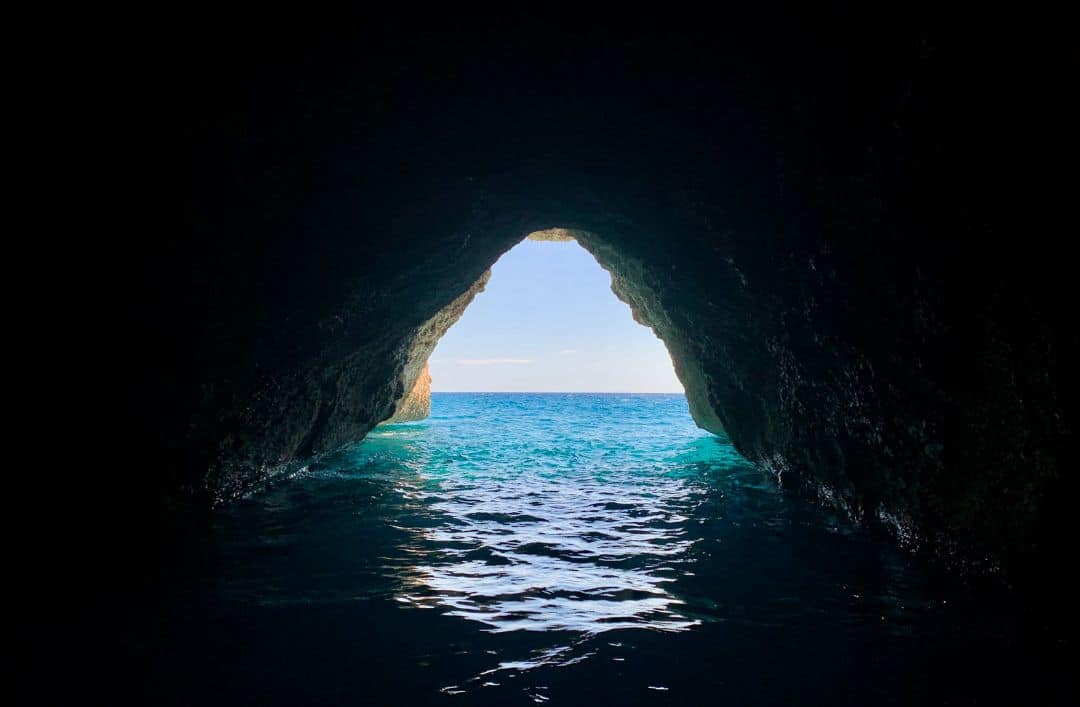When some weeks ago we told you about the most interesting caves that you can visit inland in Costa Blanca Norte, we decided it would be a good idea to follow up with a second part to tell you about the sea caves in the area. Most of these are in the vicinity of Cumbre del Sol and it’s possible that there may be some that you don’t know about yet.
Cova del Riu Blanc
Close by the Cala del Moraig beach and Cova dels Arcs, in Benitachell, the Cova del Riu Blanc is concealed inside La Falla del Moraig. It can be accessed from the sea by swimming from Cala Moraig, a distance of some 250 to 300 metres (although we advise swimming with flippers, paddle surfing or canoeing). The falla del Moraig is a spectacular, almost vertical wall of rock. Its polished appearance and the striations caused by friction of the blocks clearly show the geological movements that led to this rock formation. The fault seems to be suspended in the air over a lake and in its interior lies the underwater entrance to Riu Blanc. However, be especially careful when entering the cave, as it can be extremely dangerous to linger there when the tide is rising. To ensure a safe visit, it would probably be best to contact one of the local companies that organise trips and that way you make sure that your visit will be safe and secure.
Cova dels Arcs
The Cova dels Arcs, which is also in Benitachell, as well as being a magical place for watching the sun rise or for snorkelling (in the well-known “divers’ chamber”, the easiest to access), is also an ideal area for expert cavers who can enter what is considered to be the longest underwater outlet to the sea in Spain.
Jávea: cave zone
Next we go to the Jávea district to discover the Cova Tallada. In this spectacular cave, remains have been found from the Al Andalus era of Spain and there you can picture how this quarry was in use from the 12th century, and there are legends that tell how it was once a marine refuge during the Second World War. Technically, it is not a completely natural rock formation as it has been altered by man through repeated removal of the roughhewn rock. The area outside the cave is perfect for snorkelling and especially worth seeing is the 16th century inscription that reads: “PHILIPUS III HISP REX CAVERNAM HANC PENETRAVIT AN MDXCIX” (Philiip III visited this cave in 1599).

We consider that the ideal access to the Cova del Llop Marí is by sea, however, this will always depend on conditions such as the wind, waves and currents. This is one of the best kept secret places of the Costa Blanca Norte, with its amazing crystal clear waters and nooks and crannies filled with marine life.
Continuing in Jávea, we come to the Cova dels Òrguens. This is a particularly special place at the foot of Cap de la Nau, and it’s possible to enter by small boat, surfboard or canoe.
Denia: Cova De L’Aigua
One of the most historic caves, frequently used in the past, is Cova De L’Aigua which is a refuge for marine flora, and in the past it also served as a shelter for Roman soldiers. In fact, it is still possible to see an inscription in this regard engraved on the cave wall (protected by a grill). Rainwater has filtered into the interior of the cave and it was used as a water tank until the 16th century.
Every secret corner of the Costa Blanca Norte comes as a surprise. We have mentioned some of the sea caves that are hidden away under the finest waters in the Mediterranean. We suggest you follow our upcoming blog posts to keep abreast of everything going on in Residential Resort Cumbre del Sol.
This post is also available in: EspañolFrançaisNederlands

